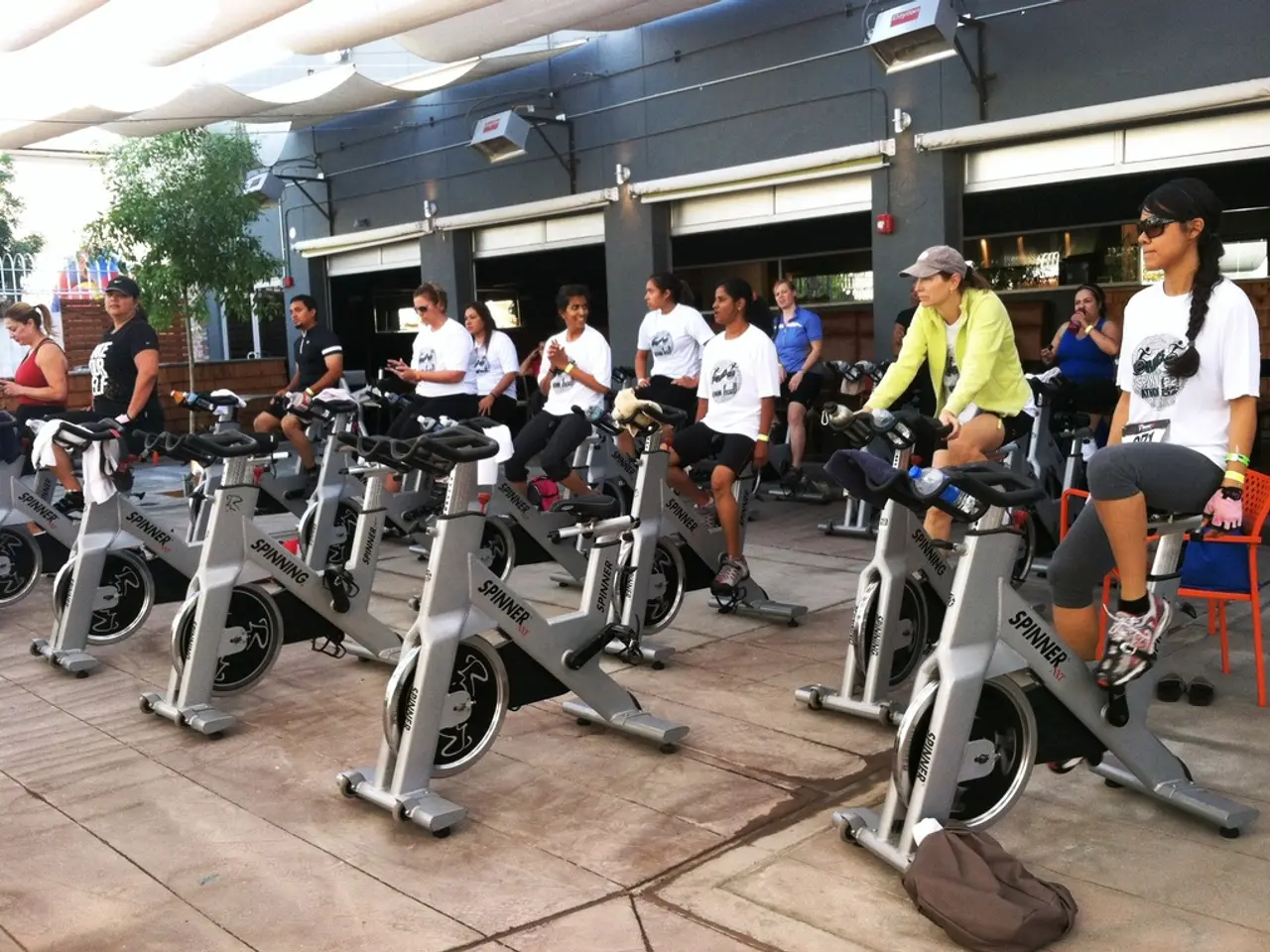Adapting to heat: How working out in warm environments, particularly indoors, can enhance your physical fitness
Heat training has emerged as a powerful tool for cyclists aiming to enhance their performance in various weather conditions. This practice primarily induces physiological adaptations that improve the body's ability to manage heat stress, optimize energy use, and support better hydration and recovery.
Key Benefits and Mechanisms
Heat Acclimation and Plasma Volume Expansion
Training in the heat increases plasma (blood) volume, which improves cardiovascular efficiency by reducing heart rate at a given workload and improving blood flow to muscles and skin for better cooling. This enables cyclists to sustain higher power outputs before heat becomes limiting.
Improved Sweat Response
Heat-acclimated cyclists begin sweating earlier, with sweat that is more diluted and conserves critical electrolytes like sodium. This enhances the body’s evaporative cooling and delays dehydration-related fatigue.
Lower Core and Skin Temperatures
Adaptations cause the body temperature to rise more slowly and remain lower during exercise, reducing thermal strain and perceived exertion, thus delaying fatigue during long or intense rides.
Reduced Carbohydrate Oxidation and Better Fuel Utilization
Heat training reduces carbohydrate oxidation during submaximal efforts, meaning muscles use glycogen more efficiently. This supports improved aerobic capacity and endurance, especially in hot conditions but also contributing to overall performance gains.
Heat-Induced Stress as a Training Stimulus
The thermal load acts as a unique physiological stressor that upregulates mechanisms related to endurance and resilience, which can translate to better performance not just in the heat but also in cooler conditions—a concept often referred to as "train hot – race cool."
Hydration, Fueling, and Recovery Strategies
Heat training increases fluid and electrolyte loss, requiring tailored hydration and fueling approaches during and after sessions to maintain performance and support recovery. Proper management of hydration and nutrition prevents GI distress, sustains energy, and optimizes recovery.
Practical Implementation
For sessions lasting more than 90 minutes, aim for 60 to 90 grams of carbohydrate per hour. Top-level World Tour cyclists have an efficiency of around 25%, while most other riders are around 20%. Riders should aim to replace 150% of fluid loss after training, and monitor sweat loss by weighing themselves before and after sessions.
Heat suits, which use controlled insulation to elevate core temperature gradually and predictably, have emerged as a tool for controlled heat adaptation during indoor training. Integrating heat training into a plan requires three to five sessions per week, lasting between 45 and 60 minutes. Post-exercise hot water immersion at approximately 40 ºC for 30 to 40 minutes can drive similar adaptations to active heat training.
Carbohydrate requirements rise when training in the heat, and riders may need 10 to 20% more carbohydrates to maintain performance. Electrolytes are crucial during heat training, as sweat contains significant amounts of sodium, along with smaller quantities of potassium, magnesium, and calcium.
Indoor training using smart trainers and apps can create a heat adaptation stimulus by limiting airflow and creating a warm, humid environment. When a rider produces 300 W of power, this generates 1080KJ of energy to power the pedals.
Considerations for Female Athletes
Female athletes may need to consider the influence of the menstrual cycle on thermoregulation during heat training. Passive heat strategies are useful during taper weeks, for athletes who are unable to tolerate prolonged heat exposure due to illness, fatigue, or injury.
Research and Evidence
In a study by Santiago Lorenzo et al., trained cyclists who underwent ten days of heat acclimation improved their time trial performance by as much as 8%, even in cooler conditions. Heat acclimation, achieved in around 7-14 days of repeated heat stress, improves the body's ability to tolerate thermal strain.
Heat shock proteins are upregulated in response to thermal stress during heat acclimation, improving muscular resilience and recovery. Hydration is crucial during heat training, as sweat rates can exceed 1.5 to 2 litres per hour. Dedicated thermometer methods, such as in-ear measurements or CORE Body Temperature sensors, can be used to monitor core temperature during indoor heat training sessions.
In summary, heat training offers numerous benefits for cyclists, improving their ability to manage heat stress, optimize energy use, maintain cardiovascular function and power output, and recover effectively. By understanding the key mechanisms and practical implementation of heat training, cyclists can harness this powerful tool to boost their performance in both hot and temperate environments.
- Incorporating road cycling with heat training can enhance their performance in various weather conditions, as it leads to improved fitness-and-exercise capabilities by optimizing energy use and promoting better health-and-wellness, such as managing heat stress effectively.
- As part of a health-and-wellness regimen, a cyclist might consider incorporating science into their training, like heat-induced stress as a training stimulus, to upregulate mechanisms related to endurance, resilience, and overall performance, benefiting not just their road cycling but also other fitness-and-exercise activities.




